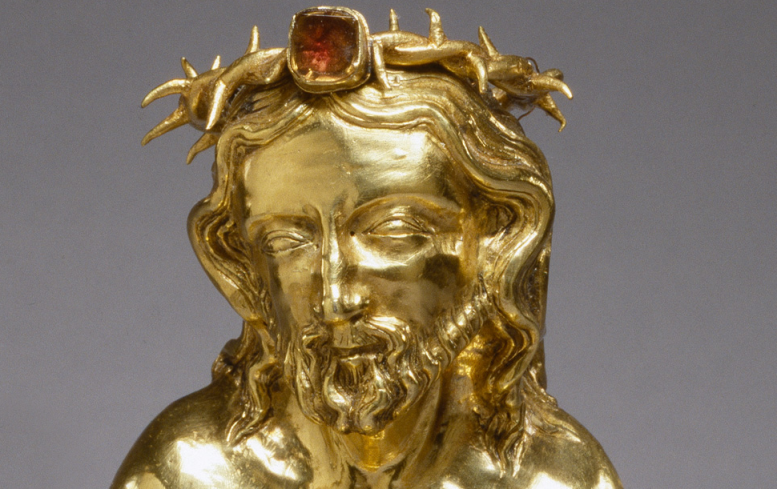 Reliquary With the Man of Sorrows
Reliquary With the Man of Sorrows
Treasures of Heaven: Saints, Relics & Devotion in Medieval Europe, on view this June at the British Museum, brings together for the first time some of the finest sacred treasures of the medieval age. It features over 150 objects from more than 40 institutions including the Vatican, European church treasuries, museums from the USA and Europe and the British Museum’s own pre-eminent collection. It was during the medieval period that the use of relics in devotional practice first developed and became a central part of Christian worship. For many, the relics of Christ and the saints – objects associated with them, such as body parts or possessions – continue to provide a bridge between heaven and earth today. Relics were usually set into ornate containers of silver and gold known as reliquaries, opulently decorated by the finest craftsmen of the age. They had spiritual and symbolic value that reflected the importance of their sacred contents. The earliest items date from the late Roman period and trace the evolution of the cult of the saints from the 4th century to the peak of relic veneration in late medieval Europe. Relics featured in the exhibition include three thorns thought to be from the Crown of Thorns, fragments of the True Cross, the foot of St Blaise, the breast milk of the Virgin Mary, the hair of St John the Evangelist, and the Mandylion of Edessa (one of the earliest known likenesses of Jesus). Treasures of Heaven: Saints, Relics & Devotion in Medieval Europe - June 23 – October 9 2011 - www.britishmuseum.org
